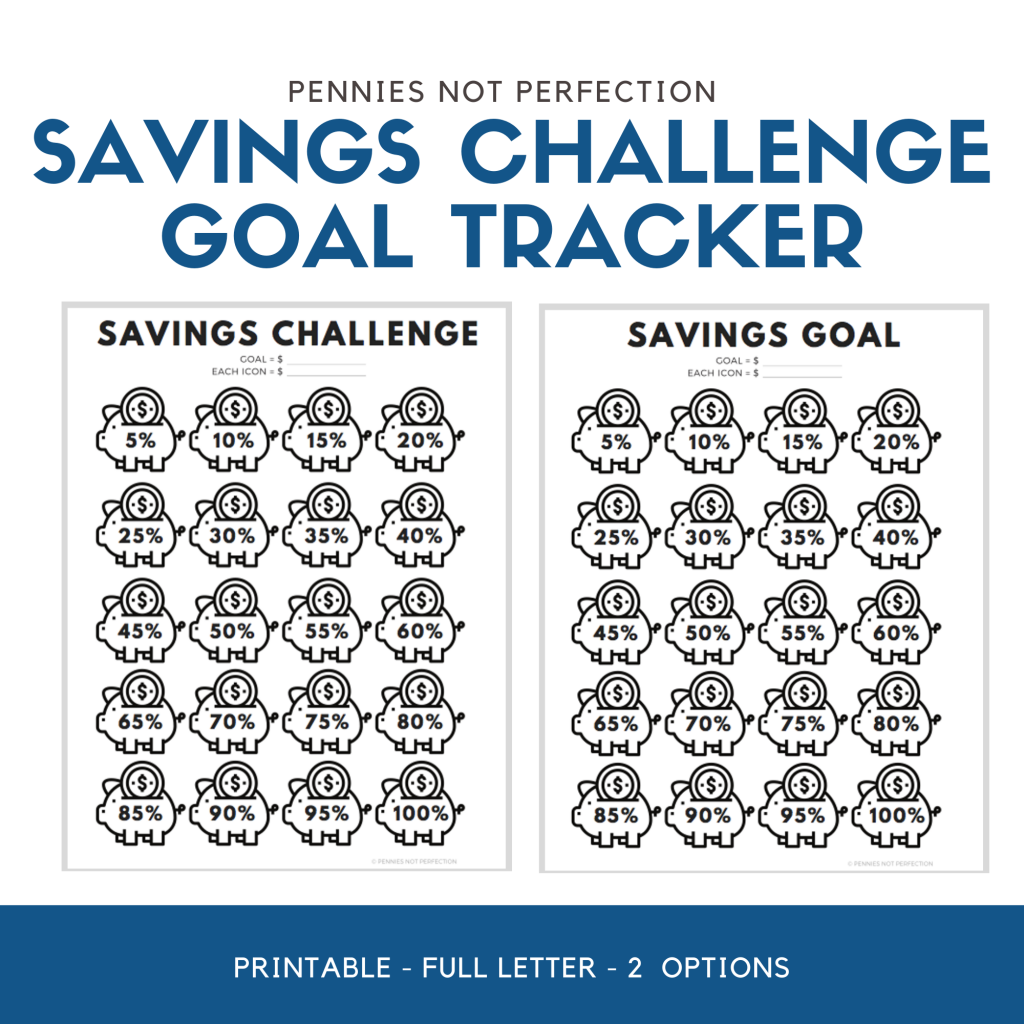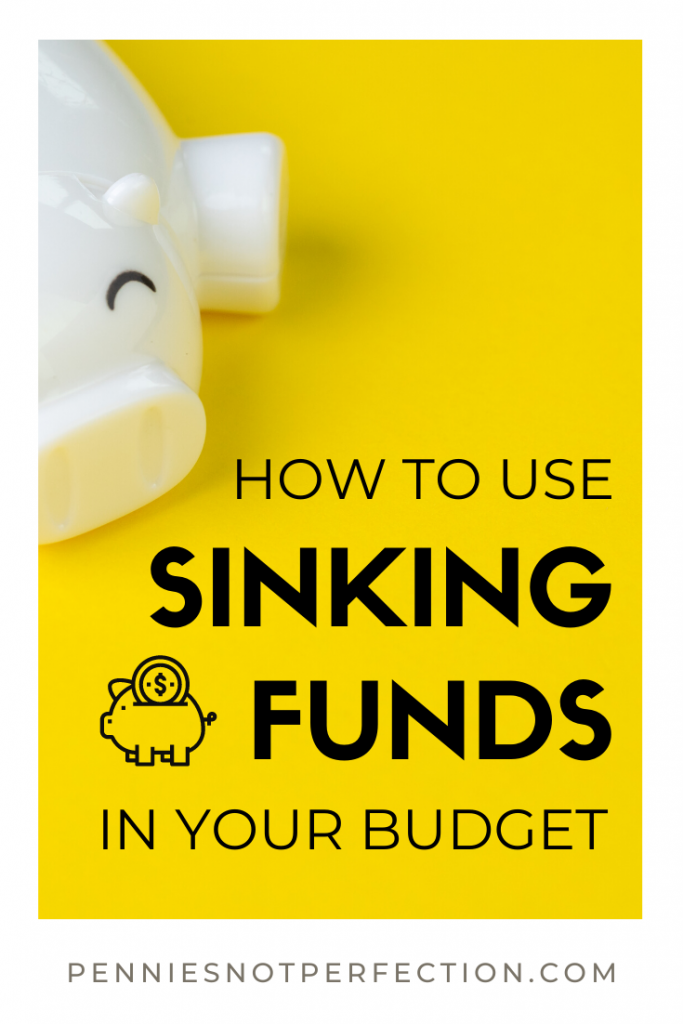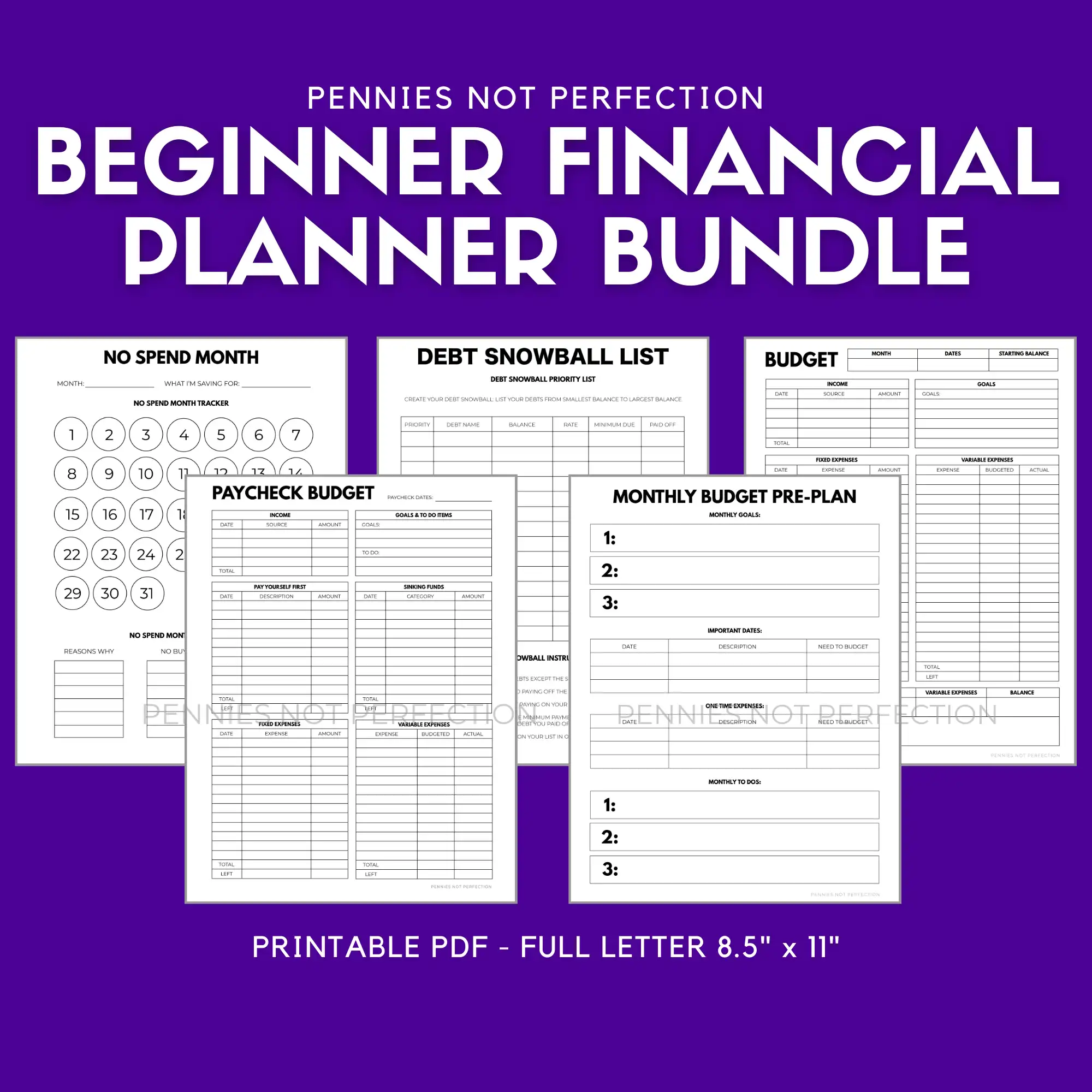Sinking funds seem confusing when you’re new to budgeting. They actually make budgeting easier and this guide to sinking funds for beginners will show you how.
This sinking funds for beginners guide covers:
- what sinking funds are
- reasons to love sinking funds
- how to set up your sinking funds
- how to figure out what to save in sinking funds.
I even show you how we set up our sinking funds in our own accounts in this video!
Since we started using sinking funds we have had less problems with our budget being ruined by unexpected expenses.
Sinking funds remove stress from budgeting. They make it much easier to pay for items in cash upfront. If you want to live a debt free life then you need to implement sinking funds.
Sinking funds truly can be a total game changer once you understand them! They can be pretty hard to understand at first when you start using sinking funds but they can revolutionize your financial life which is why I wanted to explain sinking funds in an easy way.
Dave Ramsey fans will talk about sinking funds a lot so hopefully this video explains what sinking funds are and how you can set up your own!
Typical sinking fund categories might include things like car repairs, home repairs, holidays, Christmas, gifts. I’ve also shared a lit of 13 common sinking fund categories.
What are sinking funds?
Sinking funds are accounts with a purpose. They are specific savings accounts designed to achieve a purpose.
They are accounts you save money into regularly for spending on expenses that are yearly irregular expenses, non-monthly expenses, unpredictable or big one time expenses.
It’s a mini savings account you create for an expense you know you’ll have in the future whether it is planned or unplanned.
Sinking funds make saving for hard to budget items strategic and stress free. You set a little bit aside each month until you hit your goal… and then you spend it!
You get to spend guilt free because you saved up the money for a specific purpose, so when you spend the money on that item you don’t have any guilt attached!
Using sinking funds is easy. Let’s say you are saving up for an event 6 months from now. You put a smaller amount of money aside into the sinking fund each month until the event where you spend it all.
Sinking funds are designed to let you spend without stress or worry.
Types of Sinking Funds
In general I’ve seen there are a few common ways to set up sinking funds.
- Cash envelopes sinking funds. Since a sinking fund is money you will be spending, it makes sense to sometimes do them in cash. For these you can use cash envelopes or a more secure set up like a safe.
- Multiple savings accounts. You can set up multiple accounts with some banks like Capital One 360 and give each sinking fund it’s own account. This is my preferred method.
- One savings account with a spreadsheet. Many people like to put away money into one big savings account but then track what everything is assigned to with a spreadsheet or app.
Whichever way you decide to set up you accounts, the point is to save for those expenses that would otherwise stress your budget.
In the video I show you our sinking funds and how we’ve got them set up in Capital One 360 where we keep our savings. I’ll also be opening new sinking funds so you can see how that works.
How do you set up sinking funds?
Setting up sinking funds with Capital One 360 is very easy and super quick! You can complete the whole process in less than 10 minutes in most cases.
If you want to see how we set up our sinking funds, you can see the whole process in the video below.
I walk you through everything you need to know about sinking funds. It shows how to set them up and even how to give them nicknames that match your budget.
What sinking funds should I set up?
In general you should look at your life and consider using sinking funds for things that are unusual budget items.
This includes:
- Large one time purchases like a new car or your vacation.
- Yearly or quarterly bills that aren’t paid each month like life insurance or car insurance.
- Yearly expenses you are expecting but only happen once like Christmas or new clothes at the start of the school year.
- Unexpected expenses that you know will happen but you don’t know when like car repairs.
These are the common types of expenses you can make stress free by using sinking funds. An easy way to find the expensive events you might want to start a sinking fund for is go through the last year of expenses. See where big bills hit and where you struggled to cover something during a normal month’s budget. These things might need to be sinking funds for you.
By contributing to sinking funds each month from your normal budget you will be able to handle these expenses that are hard to budget for monthly. You will never touch your emergency fund or go into debt.
Common Sinking Fund Categories
I’ve previously shared 13 sinking funds and there are many other sinking funds you might want to try.
Common sinking fund categories include:
- Car replacement
- Car maintenance & repairs
- Vehicle insurance
- Car tags
- Home maintenance & repairs
- Home decor
- Furniture
- Vacations
- Medical expenses
- Dental expenses
- Pet expenses
- Kid expenses
- Clothes
- Gifts
- Birthdays
- Christmas
- Holidays
- Life insurance
- Annual bills
The sinking funds you set up will be based on your life stage and events you expect.
Some, like saving for Christmas or planning for car repairs, will apply to most people.
How do you calculate the amount to save?
One way to guesstimate the amount to save in sinking funds for unexpected expenses is to look back at your spending over the last year.
How many times did you car need repairs? How many times did you get your oil changed? Add all of that up and divide it by 12 for an amount to save monthly for estimated car repairs.
If you anticipate any large repairs in the future you can get quotes for how much it might cost and then divide that amount by months or paychecks to determine how much extra you need to save.
When you have a specific date for an event is easy to determine the amount to save. You simply take the amount you need for the event or bill and divide it by the number or months or paychecks until you need the money.
To find out how much you need to save, you take the total needed and divide it by the amount of time until the event.
In the example of this event if you needed $1,000 you would save $166.66 a month. If you got paid bi-monthly you would save $83.30 per paycheck (2 paychecks per month for 6 months).

If you are a visual person like I am, then it might help to have a coloring tracker to visualize your progress saving with sinking funds. My Etsy shop has a variety of savings goal trackers and sinking fund tracker tools.
How do you get money out?
One questions I’ve commonly been asked about setting up sinking funds with Capital One 360 is how do you get your money out from the account? Since many traditional banks make this process complicated it is easy to wonder how you actually get the money out of your sinking funds in order to use it.
With my sinking funds at Capital One I simply transfer the money back to my checking account when I’m ready to use my debit card. When I know the final amount for the purchase I move the money over instantly and then swipe my debit card. This process is what works for us.
The only downside to this is that the number of transactions moving money from one savings account back to a checking account is limited to 6 per month. This hasn’t been an issue for us since we normally only use the sinking funds once or at most twice in a single month. If you are saving in a sinking fund in an online account it should probably be for thinks you aren’t spending on frequently. If you are spending in the category often it might just need to be a cash envelope category in your budget.
What bank do I use for my sinking funds?
I’ve been using my Capital One 360 account since before it was Capital One 360.
It was originally ING Direct but they did such an amazing job that Capital One bought them. Ultimately they changed the branding but kept all of the things that made the bank account awesome in the first place.
I’ve been a customer for over a decade now. I’ve only had good experiences with the account and Capital One in general. The customer service has always been excellent. There are no overdraft or gotcha fees. And for sinking funds moving money is quick and easy.
There are plenty of other banks that also offer high yield savings accounts perfect for sinking funds.
If your bank doesn’t offer it, check out online banks like the ones I’ve reviewed here or peek around the site for reviews on other savings accounts perfect for sinking funds.
This financial planner bundle is a grouping of everything you need to plan your budget, grow your savings, and achieve your debt payoff. It is perfect for anyone who wants an all-in-one solution to get started and get organized!
How to include sinking funds in your budget
Once you are budgeting regularly it is an easy task to include sinking funds into your routine budget. The great thing is that planning for these bigger and unexpected expenses in advance means you’ll be unlikely to ruin a budget in the future because of those pesky expenses.
Once you’ve got the sinking fund categories you want to save for, you’ll figure out the amount you want to save per month and include that in your monthly budget. Because you are saving for things in small chunks instead of all at once it is easy to include these in your budget.
Remember that sinking funds are separate from your emergency fund. While there may seem to be some overlap, sinking funds are for planned expenses or irregular expenses you know will be coming. While things like car repairs may seem like unexpected emergencies, they are actually expenses you should expect to come every once in a while since all cars need maintenance.
True medical conditions and extensive home repairs that take you by surprise can fall under your emergency fund.
Start Your Sinking Funds Today
Sinking funds can help you budget better. You’ll be able to save for large expenses and prevent budget disasters.
Sinking funds also give you the freedom to spend guilt free on bigger items because you’ve already saved up for them.
Sinking funds are pretty much the best thing ever! Once you’ve gotten started using sinking funds in your budget it will be hard to stop.
If you have not already started your sinking funds, then what are you waiting for?
Want to learn more about budgeting? Check out these helpful posts:
- What Is The Purpose Of A Budget?
- Budget Categories List
- How To Create Your First Budget
- How To Get A Reluctant Spouse On Board With Budgeting

Mary is the founder of Pennies Not Perfection where she shares her journey to build wealth through online income. She quit her day job in 2021 after she paid off her debt and doubled her 9-5 salary.
Mary's favorite free financial tool is Personal Capital. She uses their free tools to track net worth and work toward to financial freedom.
Her favorite investment platform is M1 Finance, where she built a custom portfolio for free with no fees. She shares her portfolio growth and savings progress every month on YouTube.

